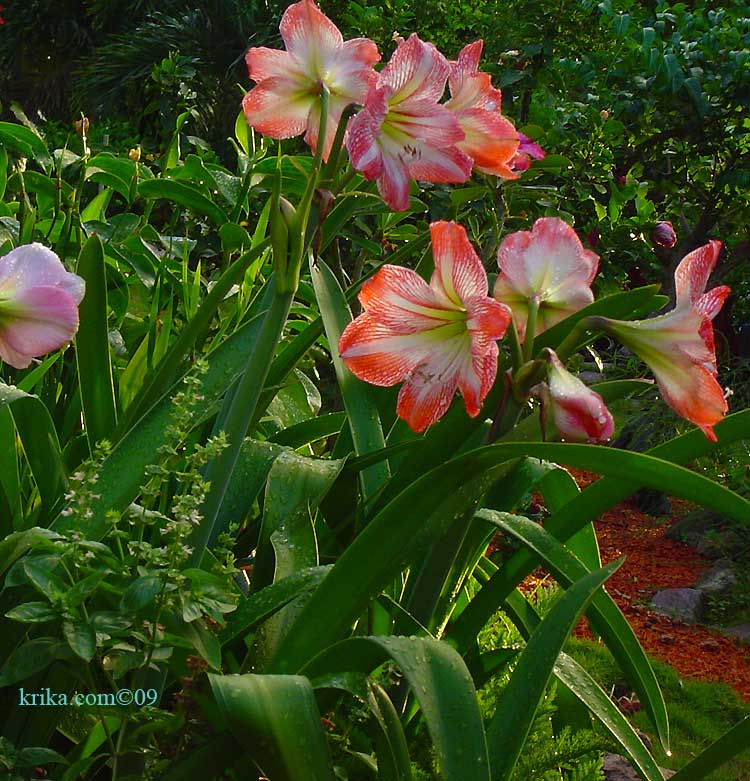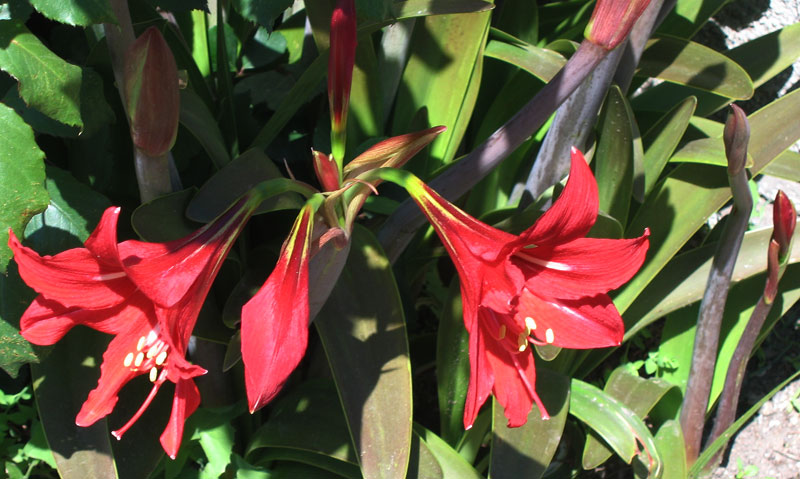| GreenGardeningCookingCuring.com | AMARYLLIS
PAGE
|
| Tour Our Destination Websites | Taxco-Today.com | Oaxaca-Today.com | Montserrat-Today Site |
| See our silver designs at Krika.com | Read our travel stories and other tales at Krika.com |
|
|
|
Our pale pink and most extraordinary amaryllis came to us as a rescue plant. A friend received it as a Christmas gift and, having enjoyed its spectacular blossom, was about to toss it out believing that having the same blossom next year wasn't possible. I truly dislike seeing any plant tossed aside so we took it along with us and the research on the care and feeding of amaryllis I had already done served me and this real beauty well again. |
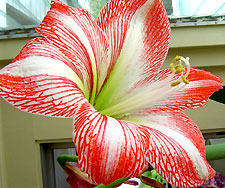 To
the right is a bulb we bought for our wedding day, Hippeastrum 'Minerva.'
Twenty years later, it and many of its offspring were going strong
in our garden in Montserrat when we sold our home there. Our crimson
and white and our pale pink and white varieties have also demonstrated
the survivor's spirit and have never disappointed us. To
the right is a bulb we bought for our wedding day, Hippeastrum 'Minerva.'
Twenty years later, it and many of its offspring were going strong
in our garden in Montserrat when we sold our home there. Our crimson
and white and our pale pink and white varieties have also demonstrated
the survivor's spirit and have never disappointed us.Planting and Care Cities and Small Gardens: Caring for these amazing plants is as easy as having a philodendron if you can believe that. Most amaryllis in the States are prepared to bloom at Christmas and they make wonderful gifts, extravagantly beautiful, easy to care for and disposable when the show is over. But, when the show is over take the pot and its bulb and give it as much sun as possible, water it when dry and then give it a teaspoon of good fertilizer (preferably something organic) every week for a couple of months. After that, stop fertilizing and begin withdrawing water giving it half and then a quarter of what it had been getting. When the leaves have become limp and very sad looking, move the pot into a dark cupboard for several months and do not water it. In five or six months take a peek and you'll most likely see green leaves or a flower stem appearing from the pot. Move it back into a brightly lighted place (or preferably in the full sun) and begin watering lightly the first time and then increasingly as the foliage appears. Then sit back and enjoy the show! Warm Climate Gardens: If you are lucky like us and live in a year round warm climate the treatment of these plants changes completely. Plant them in your garden where their flowery show will be at its best. A grouping is almost always better than a line! Keep the upper 1/4 of the bulb out of the soil. Plant them in a place where their show can be most appreciated and let them do what they do -- AMAZE US! Text & Photograph©KO 2007/2010/2012/2013 |
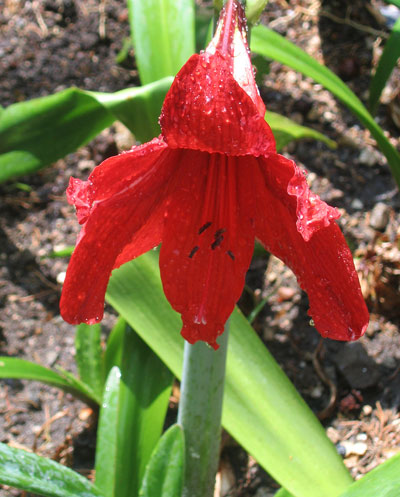 |
| Below are more photographs of these beautiful flowers we have enjoyed for years. |
Here you see the amaryllis we bought for our wedding, planted fifteen years later in our garden at what was for ten years our home in Montserrat. You can see how vibrant and healthy they are with little or no care once planted outside in a non frost bearing garden. |
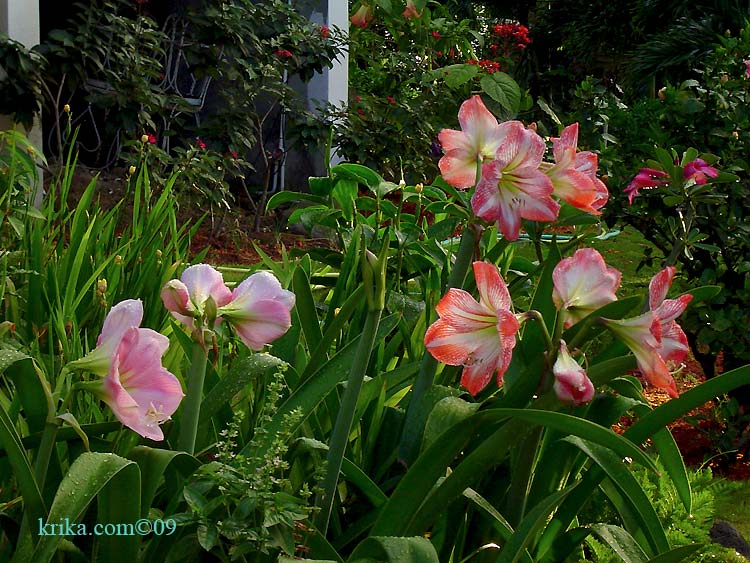 |
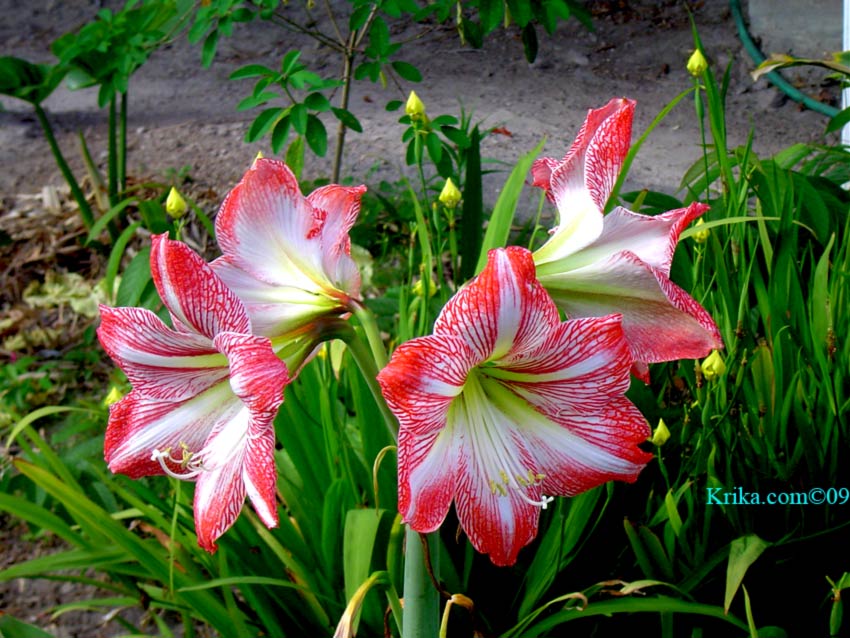 |
|
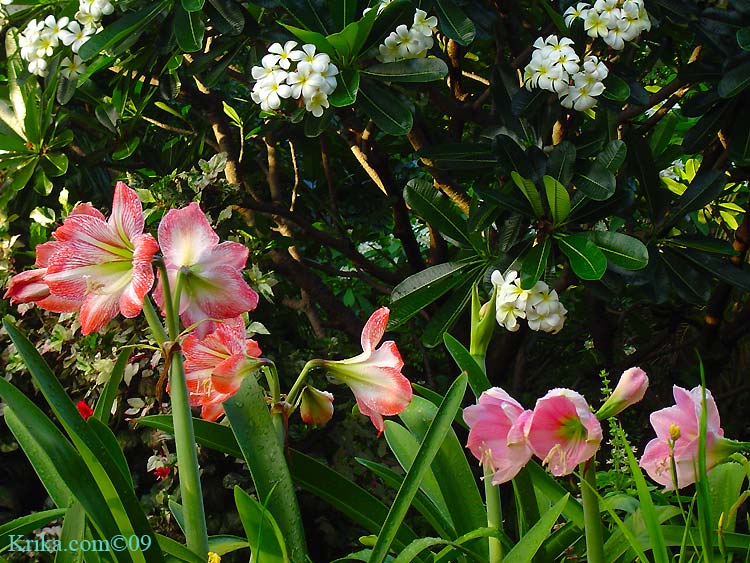 |
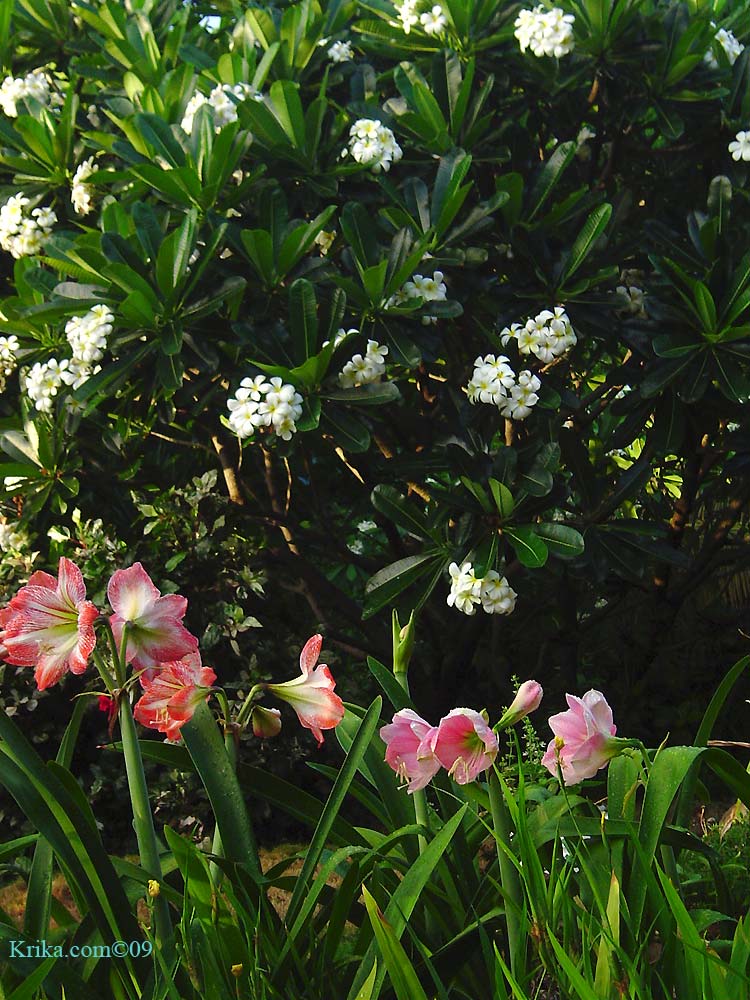 |
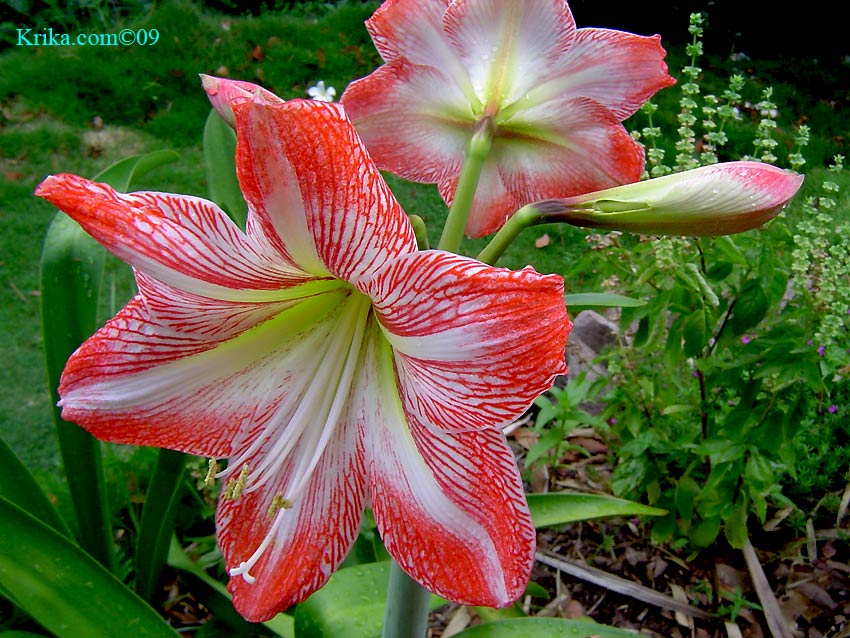 |
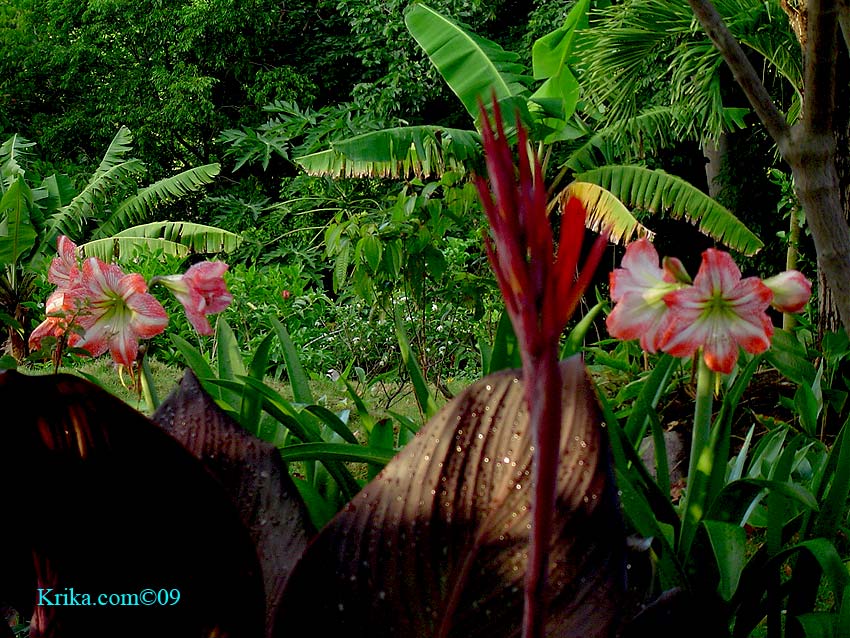 |
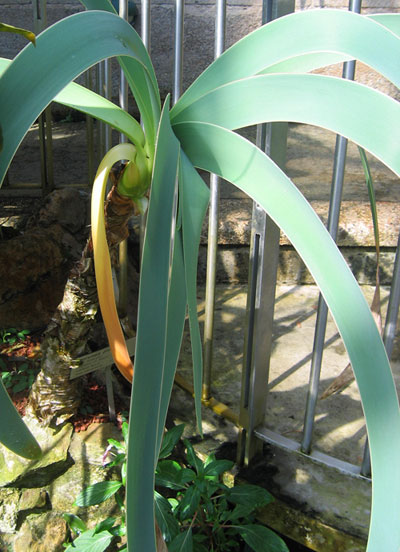 Blue
Amaryllis, Empress of Brazil Worslaya procera Blue
Amaryllis, Empress of Brazil Worslaya proceraOddly enough I was very attracted to the elegant foliage of this plant without ever seeing its blossoms. I think I would have been overcome with pleasure if it had been in bloom with its blue flowers. Benefits: From: Southern Brazil Photographed: In the Royal Botanic Garden in Sydney, Australia, in 2013. Planting and Care: Text and Photograph ©GreenGardeningCookingCuring.com 2014 |
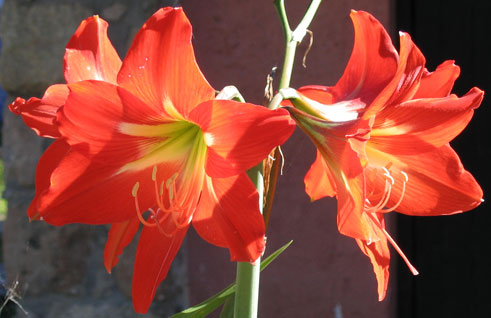 **Amaryllis Hippeastrum
equestre or Hippeastrum puniceum **Amaryllis Hippeastrum
equestre or Hippeastrum puniceumThe plant pictured on the right is less showy than the cultivated US or Mexican potted varieties. It is no less attractive growing in our former Montserrat garden, blooming lightly in February and March, but spectacularly in May. It is also a long-lasting cut flower. Our personal favorite in the potted varieties is the Hippeastrum "Apple Blossom" which seems almost unreal when it has 6 to 8 blossoms open at the same time. We have these and other normally potted amaryllis now growing in our garden at Lake Atitlan in Guatemala. From: South America Photographed: At our former home in Montserrat. Text & Photographs ©KO 2008 and ©GreenGardeningCookingCuring.com 2012/2019 |
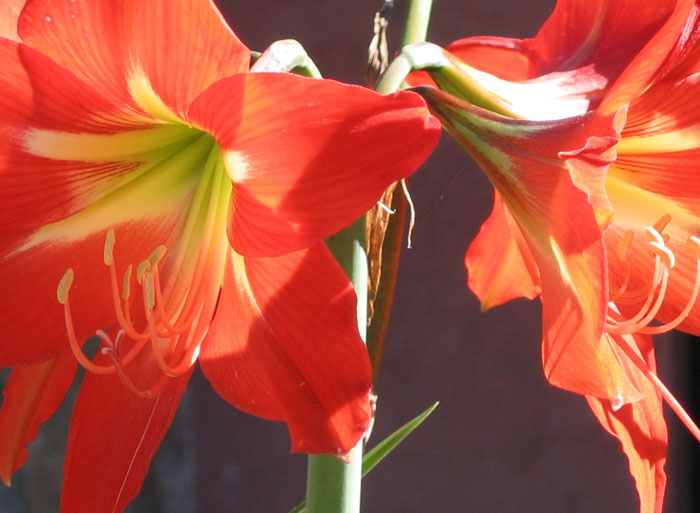 |
Below
is a photograph of one of the dozens of amaryllis we
had in our garden at Lake Atitlan in Guatemala |
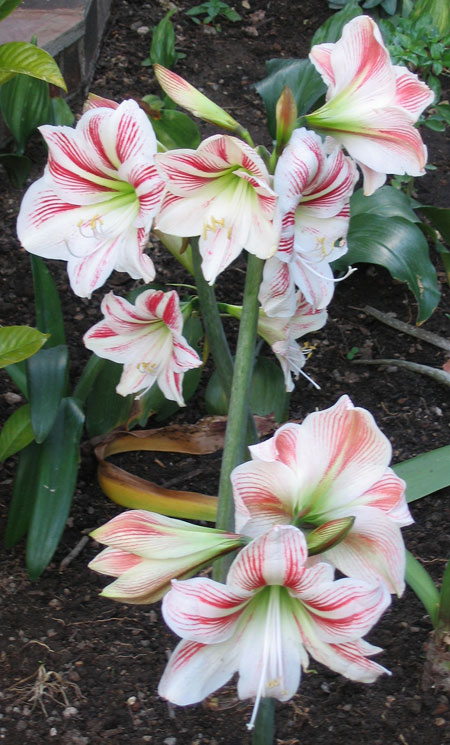 |
Below
are photographs of amaryllis we've encountered in our travels |
Photographed: By
the roadside in Sicily, Italy, in 2012. |
|
|
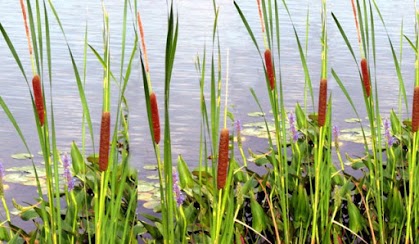
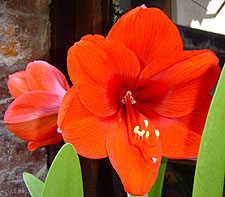 Amaryllis
Amaryllis